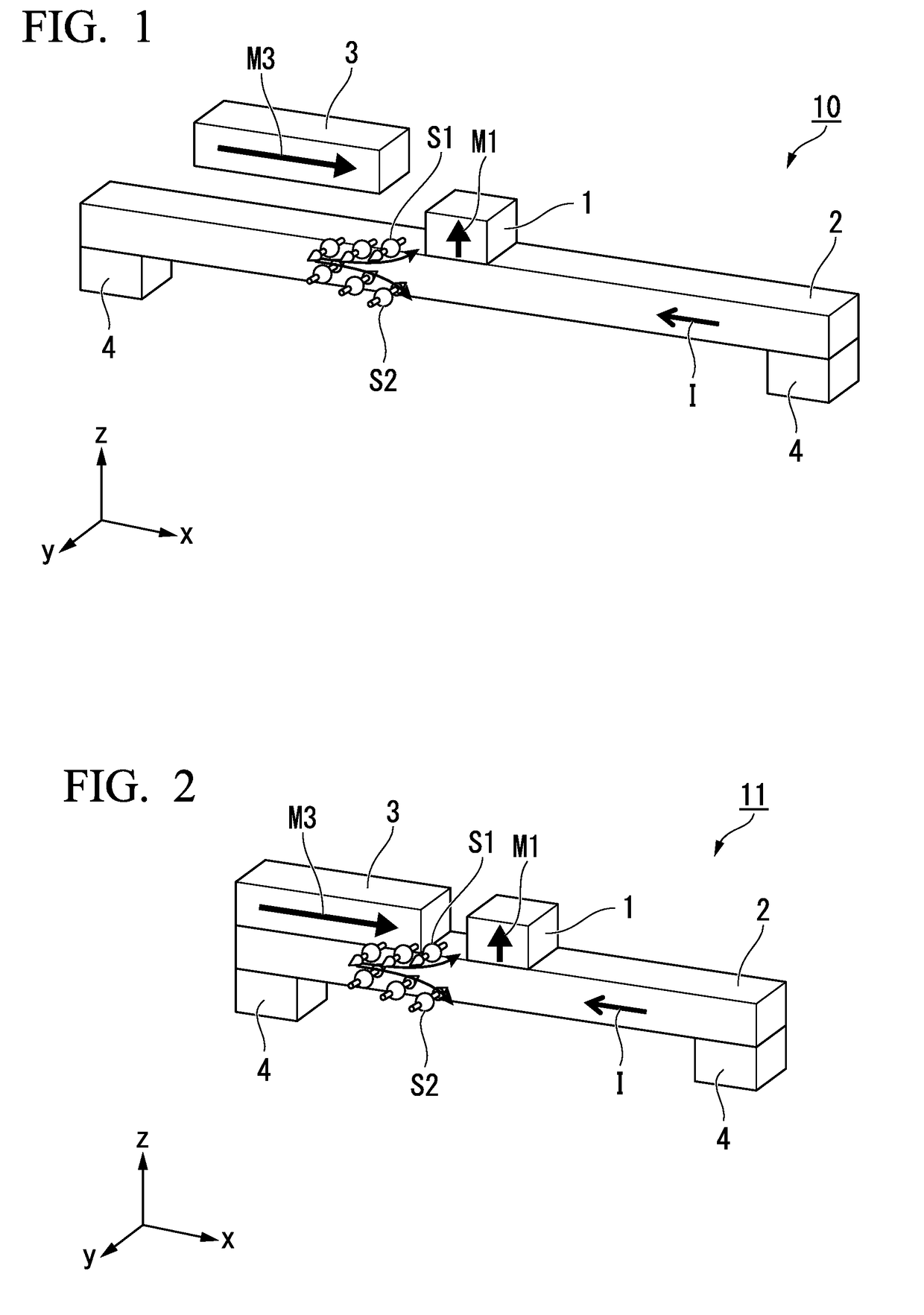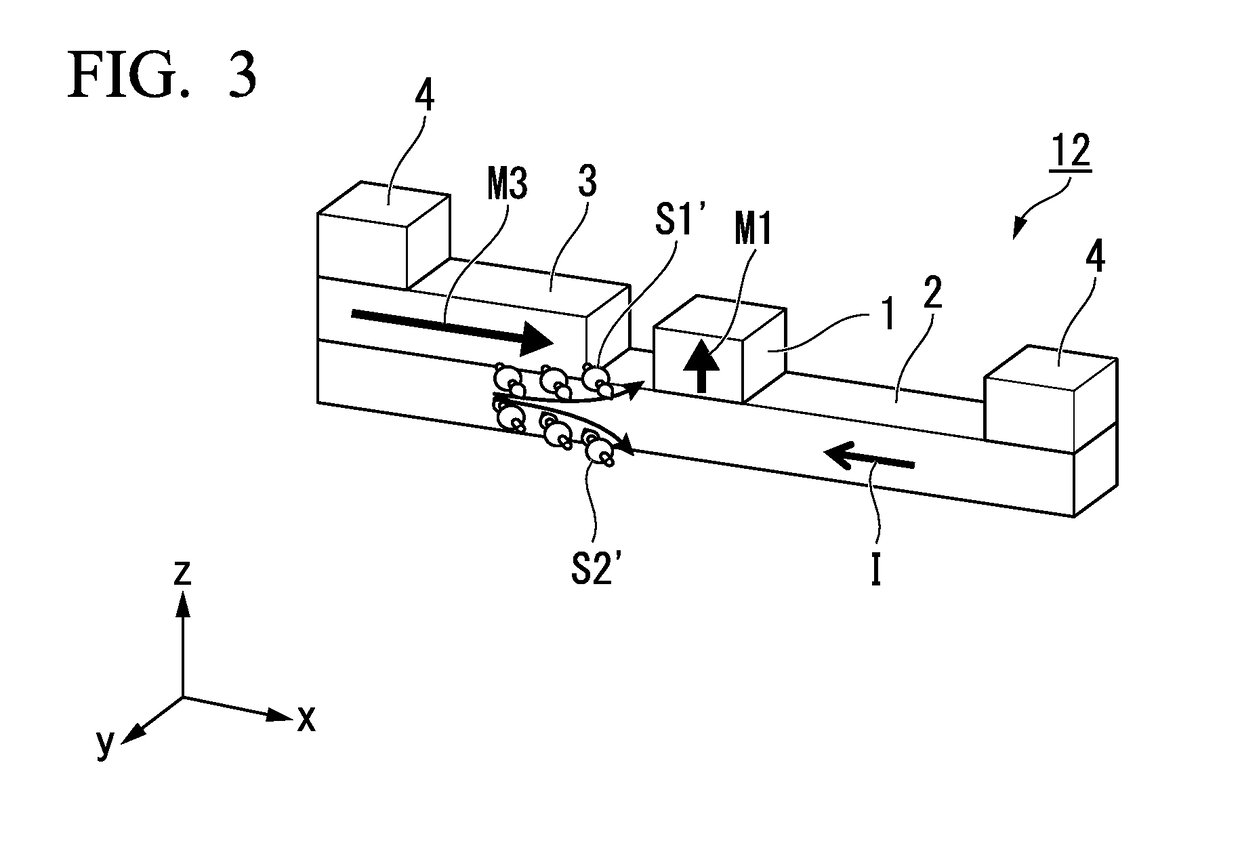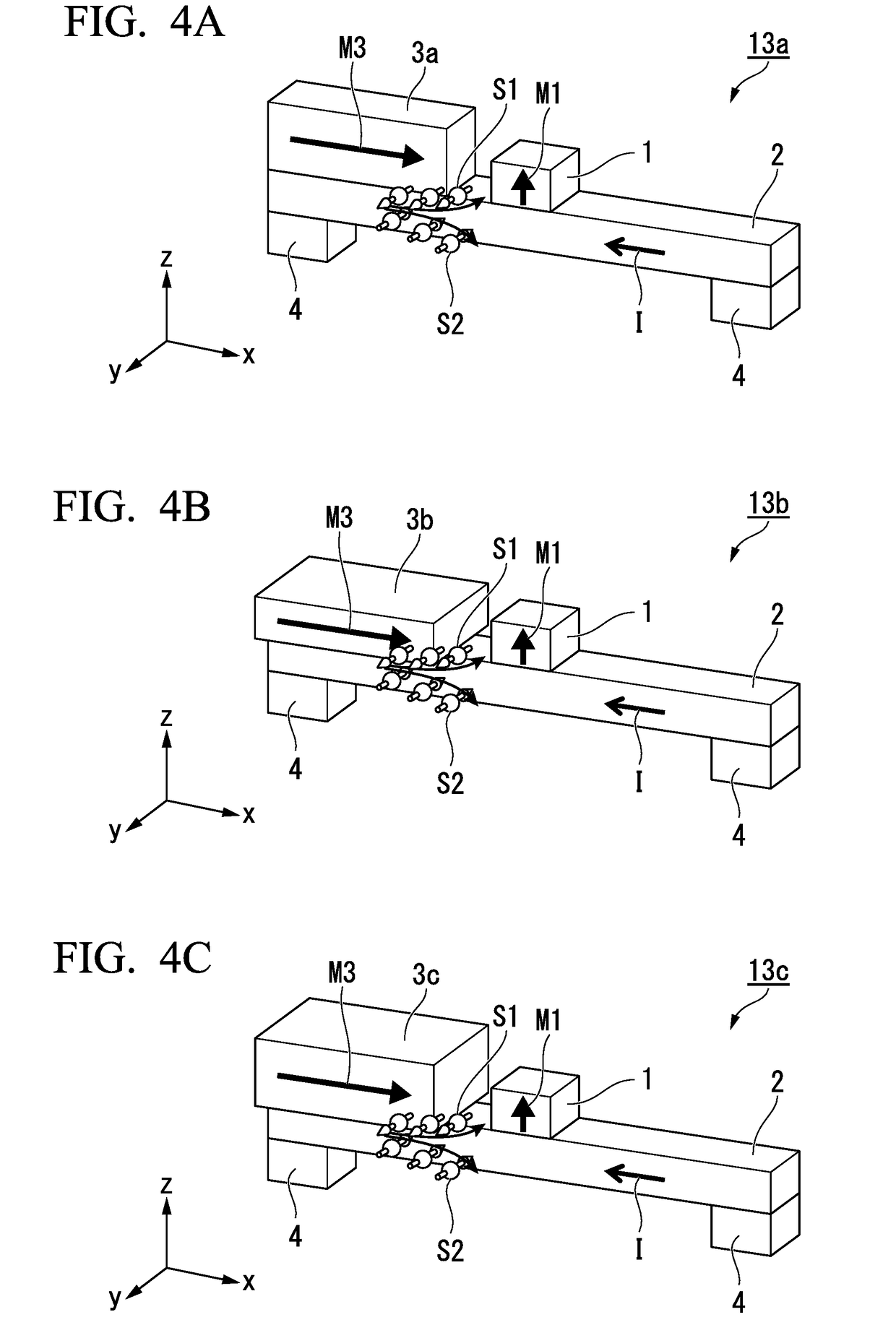Spin current magnetization rotational element, spin-orbit-torque magnetoresistance effect element, magnetic memory, and high-frequency magnetic element
a spin current magnetization and rotational element technology, applied in the direction of magnetic bodies, instruments, substrate/intermediate layers, etc., can solve the problems of difficult control of oxygen content, deterioration of the degree of integration of the integrated circuit including the insufficient elucidation of the mechanism, etc., to achieve excellent spin current magnetization rotational element, increase the effect of electricity consumption and no deterioration of the degree of integration
- Summary
- Abstract
- Description
- Claims
- Application Information
AI Technical Summary
Benefits of technology
Problems solved by technology
Method used
Image
Examples
first embodiment
[0049]FIG. 1 is a perspective view schematically illustrating a spin current magnetization rotational element according to a first embodiment.
[0050]A spin current magnetization rotational element 10 according to the first embodiment has a first ferromagnetic layer 1, a spin-orbit torque wiring 2, a first magnetic field applying layer 3, and via wirings 4. In the spin current magnetization rotational element 10 illustrated in FIG. 1, the first ferromagnetic layer 1 having the same width as the spin-orbit torque wiring 2 and having a rectangular shape in a plan view is laminated in a middle part on an upper surface of the belt-shaped spin-orbit torque wiring 2. In addition, the first magnetic field applying layer 3 has a width and a length equal to those of the first ferromagnetic layer 1 in a plan view and is disposed to be separated from the first ferromagnetic layer 1 and the spin-orbit torque wiring 2.
[0051]Hereinafter, description will be given while defining a first direction in...
second embodiment
[0086]A spin current magnetization rotational element 11 according to the second embodiment illustrated in FIG. 2 is different from the spin current magnetization rotational element 10 according to the first embodiment in that the first magnetic field applying layer 3 and the spin-orbit torque wiring 2 are in contact with each other. Other configurations are the same as those of the spin current magnetization rotational element 10 according to the first embodiment. The same reference signs are applied to the same configurations, and description thereof is omitted.
[0087]The spin-orbit torque wiring 2 containing a heavy metal has high electric resistance. When the first magnetic field applying layer 3 is a metal, heat generation due to the current I can be minimized by connecting the first magnetic field applying layer 3 formed of a metal having low resistance to the spin-orbit torque wiring 2.
[0088]In addition, a magnetization rotation of the spin current magnetization rotational ele...
third embodiment
[0094]Spin current magnetization rotational elements 13a, 13b, and 13c according to a third embodiment illustrated in FIG. 4A to FIG. 4C are different from the spin current magnetization rotational element 11 according to the second embodiment in that a cross-sectional area of the first magnetic field applying layer 3 cut in a yz-plane is larger than a cross-sectional area of the first ferromagnetic layer 1 cut in the yz-plane. Other configurations are the same as the spin current magnetization rotational element 11 according to the second embodiment. The same reference signs are applied to the same configurations, and description thereof is omitted.
[0095]In the spin current magnetization rotational element 13a illustrated in FIG. 4A, the width of a first magnetic field applying layer 3a in the y-direction is equal to the width of the first ferromagnetic layer 1 in the y-direction, and the height thereof in the z-direction is higher than the height of the first ferromagnetic layer 1...
PUM
| Property | Measurement | Unit |
|---|---|---|
| atomic number | aaaaa | aaaaa |
| spin diffusion length | aaaaa | aaaaa |
| magnetic field | aaaaa | aaaaa |
Abstract
Description
Claims
Application Information
 Login to View More
Login to View More - R&D
- Intellectual Property
- Life Sciences
- Materials
- Tech Scout
- Unparalleled Data Quality
- Higher Quality Content
- 60% Fewer Hallucinations
Browse by: Latest US Patents, China's latest patents, Technical Efficacy Thesaurus, Application Domain, Technology Topic, Popular Technical Reports.
© 2025 PatSnap. All rights reserved.Legal|Privacy policy|Modern Slavery Act Transparency Statement|Sitemap|About US| Contact US: help@patsnap.com



